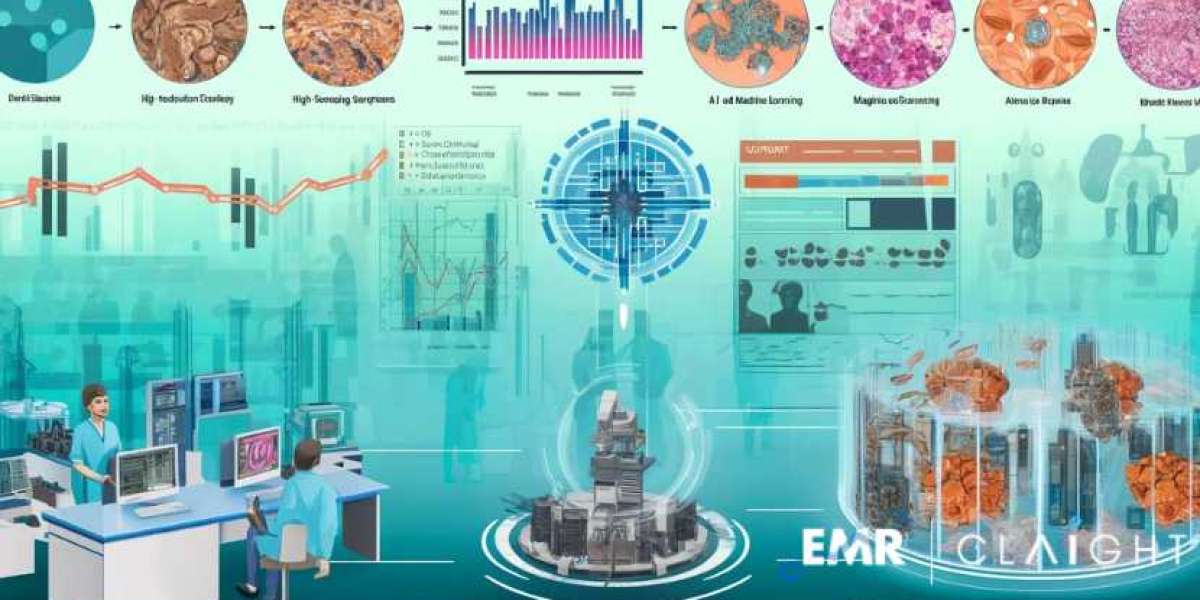The spatial genomics and transcriptomics market is on the cutting edge of molecular biology, fundamentally changing the way we understand cell function, tissue development, and disease progression. The market's rapid growth—expected to climb from USD 209.28 million in 2023 to USD 454.53 million by 2032—demonstrates the increasing importance of these technologies in research and clinical applications.
Understanding Spatial Genomics and Transcriptomics: Why Does It Matter?
Spatial genomics and transcriptomics refer to methods that allow scientists to analyze gene expression patterns while retaining spatial information about where in the tissue these processes occur. Unlike bulk RNA sequencing or single-cell RNA sequencing, which often require cells to be dissociated from tissues, spatial technologies maintain tissue architecture. This is crucial in understanding cellular microenvironments, which influence gene expression, signaling pathways, and cell interactions.
Applications in Key Fields:
- Cancer Research: Tumor microenvironments are highly heterogeneous, and spatial transcriptomics enables researchers to map out how gene expression varies across different regions of a tumor. This helps in identifying resistant cancer cell populations or potential therapeutic targets.
- Neuroscience: Neurons are spatially organized in the brain, and spatial genomics allows scientists to map neural gene expression in relation to brain regions, aiding in the study of neurodevelopmental disorders, brain injuries, and neurodegenerative diseases like Alzheimer's.
- Immunology: The immune response is often localized, with specific immune cells clustering in tissues to combat infections or inflammation. Spatial transcriptomics enables the study of immune cell activity within tissues, allowing for more precise insights into how the immune system responds to threats.
Key Drivers of Market Growth
1. Revolutionary Single-Cell and Spatial Technologies
The rise of single-cell sequencing technologies, such as scRNA-seq, has laid the foundation for spatial analysis by making it possible to profile gene expression at the level of individual cells. When combined with spatial genomics tools, researchers can map these cellular profiles directly onto tissue sections.
High Spatial Resolution: New platforms are allowing single-cell resolution of gene expression across tissue landscapes. For example, 10x Genomics' Visium Spatial Gene Expression platform enables comprehensive gene profiling within the context of intact tissue architecture.
Parallel Imaging and Sequencing: Advances in fluorescence in situ hybridization (FISH) and spatial transcriptomics are driving this field. These techniques make it possible to map gene expression patterns for thousands of genes across whole tissue sections in a single experiment.
2. Precision Medicine and Personalized Treatment Approaches
Spatial genomics is key to unlocking precision medicine, particularly in oncology. By studying the spatial distribution of cancer cells, clinicians can identify heterogeneities that bulk sequencing might miss, such as regions of drug resistance or highly proliferative zones. This allows for more targeted therapies, reducing side effects and increasing treatment efficacy.
For instance, spatial genomics helps in identifying:
- Immune-excluded tumor regions, where T cells are unable to penetrate tumor cores.
- Drug-resistant niches within a tumor where cells harbor different mutations compared to the rest of the tissue.
3. Technological Advancements in Data Acquisition and Analytics
The massive data output from spatial technologies necessitates advanced computational tools for analysis. The rapid development of bioinformatics platforms capable of handling spatial datasets is pushing the adoption of these technologies in both research and clinical labs.
Artificial Intelligence and Machine Learning: These tools are being integrated into spatial data analysis, providing automated insights from complex datasets. For example, machine learning algorithms can detect patterns in gene expression data that correlate with disease outcomes.
Multi-Omic Integration: Spatial technologies are increasingly being combined with other omics approaches, such as proteomics or epigenomics, providing a more comprehensive understanding of cell function. This multi-modal approach is especially promising in the study of complex diseases like cancer, where gene, protein, and epigenetic regulation interact.
4. Expanding Applications Beyond Medicine
While healthcare and research labs are the primary drivers, spatial genomics is also finding applications in agriculture and environmental biology. For example:
- Plant Genomics: Spatial transcriptomics can reveal how gene expression varies in different parts of a plant, which is crucial for crop improvement and understanding responses to environmental stress.
- Microbiome Research: Mapping the spatial arrangement of microbiomes in ecosystems or human bodies opens new avenues for understanding microbial interactions and their effects on health and the environment.
Market Challenges
1. High Costs of Instruments and Consumables
Advanced spatial technologies require highly specialized instruments, which are often expensive. Platforms like 10x Genomics' Visium or NanoString Technologies' GeoMx Digital Spatial Profiler represent significant capital investments for research institutions. Additionally, the consumables required for each experiment are costly, limiting accessibility to well-funded labs and commercial entities.
2. Technical Complexity
Spatial genomics and transcriptomics require expertise in tissue handling, sequencing, and bioinformatics. The integration of these fields poses challenges:
- Tissue Preparation: Ensuring high-quality, well-preserved tissue samples is critical, as spatial techniques depend on maintaining tissue architecture.
- Data Interpretation: The complexity of spatial datasets necessitates advanced bioinformatics skills, and there’s a shortage of trained personnel capable of analyzing this data effectively.
3. Standardization Issues
There’s a lack of standardized protocols across different platforms. The field is still relatively new, and each company uses proprietary technologies, leading to variability in data quality and reproducibility across different labs.
Competitive Landscape
1. 10x Genomics
A pioneer in the field, 10x Genomics offers the Visium platform, which is widely regarded as a leading technology for spatial gene expression. The company’s recent acquisitions, such as Cartana, have strengthened its position in spatial transcriptomics, providing high-throughput solutions for multi-dimensional tissue analysis.
2. NanoString Technologies, Inc.
NanoString's GeoMx Digital Spatial Profiler is another top player in this market. With the ability to profile RNA and protein simultaneously across tissue sections, this platform has become popular in both academic and commercial labs.
3. Illumina, Inc.
Illumina, already a dominant force in genomics, is investing in spatial genomics to expand its reach beyond sequencing. Through strategic partnerships and acquisitions, Illumina aims to integrate spatial transcriptomics into its existing sequencing workflows, offering end-to-end solutions for researchers.
4. S2 Genomics, Inc.
S2 Genomics focuses on simplifying the workflow for spatial genomics with its Singulator tissue dissociation system, which offers rapid and gentle dissociation of tissues for downstream spatial applications.
5. Dovetail Genomics LLC
Dovetail Genomics' expertise in chromatin capture technology complements spatial genomics by providing insights into how 3D genome organization influences gene expression. This integration of structural and spatial data is increasingly important in cancer research.
Regional Insights
1. North America
- United States: Dominates the market due to substantial investments in biotech research and the presence of leading genomics companies. National Institutes of Health (NIH) funding has been instrumental in advancing spatial genomics research.
- Canada: Growing research infrastructure and a strong presence of genomics-focused universities and startups are driving market growth.
2. Europe
- United Kingdom and Germany lead European efforts in spatial genomics, supported by government funding and strong academic research programs. The European Union's Horizon Europe program is fueling innovations in this field.
3. Asia-Pacific
- Countries like China, Japan, and South Korea are rapidly becoming significant players in the spatial genomics market. With increasing investments in biotechnology and genomics research, Asia-Pacific is expected to witness the fastest growth rate during the forecast period.
Future Outlook
The future of the spatial genomics and transcriptomics market is promising, with applications likely to expand into fields like therapeutic development, agriculture, and environmental sciences. As more affordable and user-friendly technologies emerge, the market will continue to grow, driven by the demand for insights that spatially resolved omics data provide.
- Integration with CRISPR: There is growing interest in combining spatial technologies with CRISPR gene editing. This would allow researchers to precisely map the effects of gene edits in real-time within living tissues.
- Real-Time Spatial Profiling: Emerging technologies aim to make spatial gene expression profiling real-time, which would be a game-changer for both research and clinical diagnostics.








